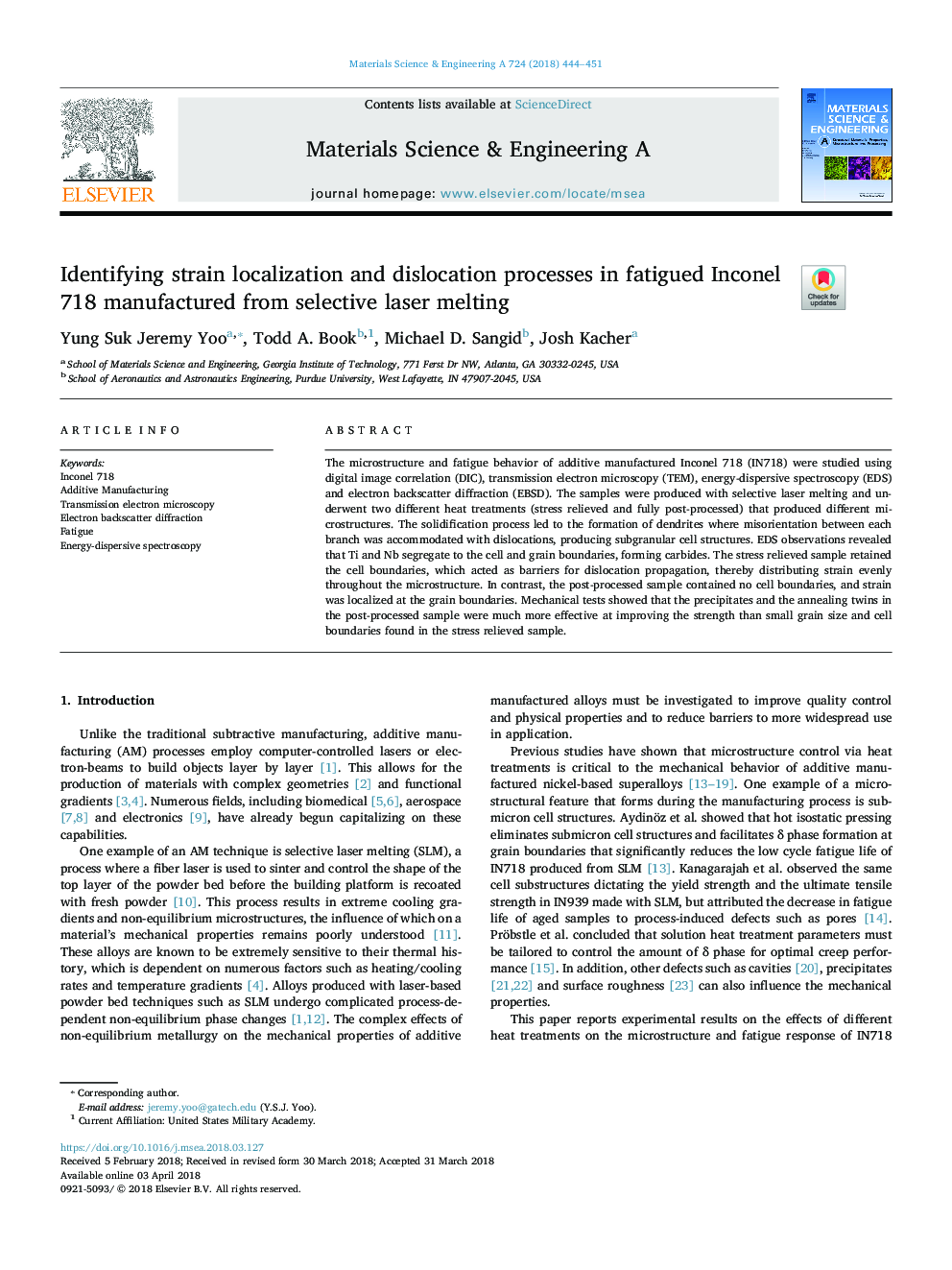| Article ID | Journal | Published Year | Pages | File Type |
|---|---|---|---|---|
| 7972547 | Materials Science and Engineering: A | 2018 | 8 Pages |
Abstract
The microstructure and fatigue behavior of additive manufactured Inconel 718 (IN718) were studied using digital image correlation (DIC), transmission electron microscopy (TEM), energy-dispersive spectroscopy (EDS) and electron backscatter diffraction (EBSD). The samples were produced with selective laser melting and underwent two different heat treatments (stress relieved and fully post-processed) that produced different microstructures. The solidification process led to the formation of dendrites where misorientation between each branch was accommodated with dislocations, producing subgranular cell structures. EDS observations revealed that Ti and Nb segregate to the cell and grain boundaries, forming carbides. The stress relieved sample retained the cell boundaries, which acted as barriers for dislocation propagation, thereby distributing strain evenly throughout the microstructure. In contrast, the post-processed sample contained no cell boundaries, and strain was localized at the grain boundaries. Mechanical tests showed that the precipitates and the annealing twins in the post-processed sample were much more effective at improving the strength than small grain size and cell boundaries found in the stress relieved sample.
Keywords
Related Topics
Physical Sciences and Engineering
Materials Science
Materials Science (General)
Authors
Yung Suk Jeremy Yoo, Todd A. Book, Michael D. Sangid, Josh Kacher,
